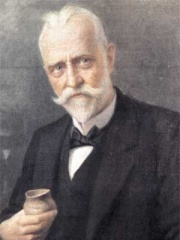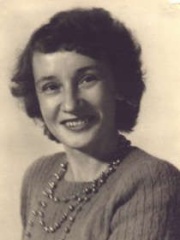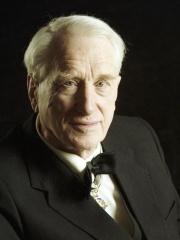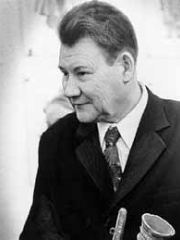



The Most Famous
ARCHAEOLOGISTS from Russia
This page contains a list of the greatest Russian Archaeologists. The pantheon dataset contains 151 Archaeologists, 4 of which were born in Russia. This makes Russia the birth place of the 7th most number of Archaeologists behind Italy, and Sweden.
Top 4
The following people are considered by Pantheon to be the most legendary Russian Archaeologists of all time. This list of famous Russian Archaeologists is sorted by HPI (Historical Popularity Index), a metric that aggregates information on a biography's online popularity.

1. Gustaf Kossinna (1858 - 1931)
With an HPI of 60.84, Gustaf Kossinna is the most famous Russian Archaeologist. His biography has been translated into 22 different languages on wikipedia.
Gustaf Kossinna (28 September 1858 – 20 December 1931) was a German philologist and archaeologist who was Professor of German Archaeology at the University of Berlin. Along with Carl Schuchhardt he was the most influential German prehistorian of his day, and was creator of the techniques of settlement archaeology (German: Siedlungsarchaeologie). His nationalistic theories about the origins of the Germanic peoples and Indo-Europeans influenced aspects of National Socialist ideology. Though politically discredited after World War II, Kossinna's methodological approach has greatly influenced archaeology up to the present day. In the years following World War II, Kossinna's theories of settlement archaeology were widely dismissed as pseudoscience. Recent discoveries in archaeogenetics have prompted a renewed discussion of Kossinna's legacy and the significance of migration in prehistory.

2. Tatiana Proskouriakoff (1909 - 1985)
With an HPI of 58.67, Tatiana Proskouriakoff is the 2nd most famous Russian Archaeologist. Her biography has been translated into 22 different languages.
Tatiana Proskouriakoff (Russian: Татьяна Авенировна Проскурякова, Tatyana Avenirovna Proskuryakova; January 23 [O.S. January 10] 1909, – August 30, 1985) was a Russian-American Mayanist scholar and archeologist who contributed significantly to the deciphering of Maya hieroglyphs, the writing system of the pre-Columbian Maya civilization of Mesoamerica. Born in Tomsk, Tatiana moved to the US with her parents in 1916. In 1924, she accepted American citizenship. She graduated from the College of Architecture at Pennsylvania State University (1930). In 1936–1937, she took part in two seasons of an archeological expedition to Piedras Negras (Guatemala). In 1939, she made scientific trips to Copán and Chichen Itza. From 1940 to 1958, she was a staff member of the Carnegie Institute and developed methods of dating ancient Mayan monuments based on the peculiarities of the fine arts style. From 1950 to 1955, she worked at the excavations of Mayapan. In 1958, Proskouriakoff moved to the Peabody Museum at Harvard University, where she worked until her retirement in 1977. In her final years of life, she had Alzheimer's disease. Proskouriakoff's most significant scientific contribution is considered to be the consistent application of the structural method to Mayan inscriptions of the classical period, as a result of which she proved that historical events were recorded on the monuments. Publications about new method application have been published since 1960. In 1967, she wrote the preface for the English translation of Yuri Knorozov's monograph "Writing of Maya Indians". However, she did not try to voice Maya texts, although she recognized the method of deciphering the written language. Her work laid a solid foundation for understanding Mayan historical texts and reconstructing the political history of Mayan city-states. In 1974, she prepared a catalog of a thousand jade products from the sacred cenote Chichen Itza, kept in the Peabody Museum. Proskouriakoff worked for over twenty years on the consolidated history of the Maya, which was published posthumously in 1994. In 1998, part of Proskouriakoff's ashes was buried in the "J-23" building on the Acropolis in Piedras Negras, which she depicted in her archeological reconstructions.

3. Boris Piotrovsky (1908 - 1990)
With an HPI of 53.41, Boris Piotrovsky is the 3rd most famous Russian Archaeologist. His biography has been translated into 16 different languages.
Boris Borisovich Piotrovsky, also Piotrovskii (Russian: Бори́с Бори́сович Пиотро́вский; February 14 [O.S. February 1] 1908 – October 15, 1990) was a Soviet Russian academician, historian-orientalist and archaeologist who studied the ancient civilizations of Urartu, Scythia, and Nubia. He is best known as a key figure in the study of the Urartian civilization of the southern Caucasus. From 1964 until his death, Piotrovsky was also Director of the Hermitage Museum in Leningrad (now Saint Petersburg).

4. Alexey Okladnikov (1908 - 1981)
With an HPI of 51.65, Alexey Okladnikov is the 4th most famous Russian Archaeologist. His biography has been translated into 16 different languages.
Alexey Pavlovich Okladnikov (Russian: Алексе́й Па́влович Окла́дников; 1908–1981) was a Soviet archaeologist, historian, and ethnographer, an expert in the ancient cultures of Siberia and the Pacific Basin. He was elected a full member of the Academy of Sciences of the USSR in 1968, and awarded the honorary title of the Hero of Socialist Labor in 1978. The childhood of the scientist took place in Biryulka village in Siberia. From 1938 to 1961, Okladnikov worked in the Leningrad Division of the Archeology Institute of the USSR Academy of Sciences. Since 1961 Head of the Division of Human Research of the Economics Institute, Siberian Division of the USSR Academy of Sciences. Since 1966 he was the director of the Institute of History, Philology and Philosophy, Siberian Division of the USSR Academy of Sciences. Since 1962 Professor and Head, Department of History, of Novosibirsk State University. His works include research on ancient history of Siberia, Far East, Mongolia, and Middle East. He identified numerous cultures of the Paleolithic, Neolithic, Bronze, and Iron Ages in Siberia and the Far East. A. P. Okladnikov taught field studies in Siberia, the Far East, Central Asia and Mongolia. In 1971 he supervised excavations at Zashiversk and the relocation of the historic Spaso-Zashiverskaya Church to Novosibirsk, where it is now displayed. He excavated and studied remnants of Neanderthal culture in Teshik-Tash in Uzbekistan, Paleolithic remnants in Priamurye and Mongolia, as well as petroglyphs on the banks of the Lena River and the Angara River In 1945 Okladnikov examined the remains of a Russian polar expedition base left in 1617 in the Faddey Islands off the north-eastern coast of the Taymyr Peninsula, where he also made other discoveries. He is the author of the Summary on the History of Ancient Society and the Ancient Culture of Paleolitic and Neolithic Art, the History of Siberia, the Far East and the Far North. The museum of Khabarovsk is named the "Okladnikov Museum" in his honour.
People
Pantheon has 4 people classified as Russian archaeologists born between 1858 and 1909. Of these 4, none of them are still alive today. The most famous deceased Russian archaeologists include Gustaf Kossinna, Tatiana Proskouriakoff, and Boris Piotrovsky.
Deceased Russian Archaeologists
Go to all RankingsGustaf Kossinna
1858 - 1931
HPI: 60.84
Tatiana Proskouriakoff
1909 - 1985
HPI: 58.67
Boris Piotrovsky
1908 - 1990
HPI: 53.41
Alexey Okladnikov
1908 - 1981
HPI: 51.65
Overlapping Lives
Which Archaeologists were alive at the same time? This visualization shows the lifespans of the 3 most globally memorable Archaeologists since 1700.

